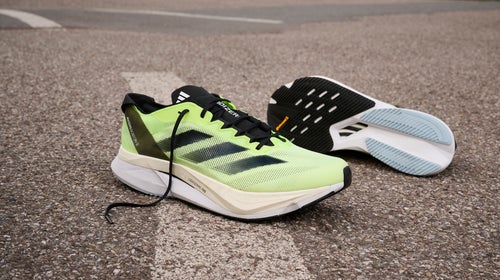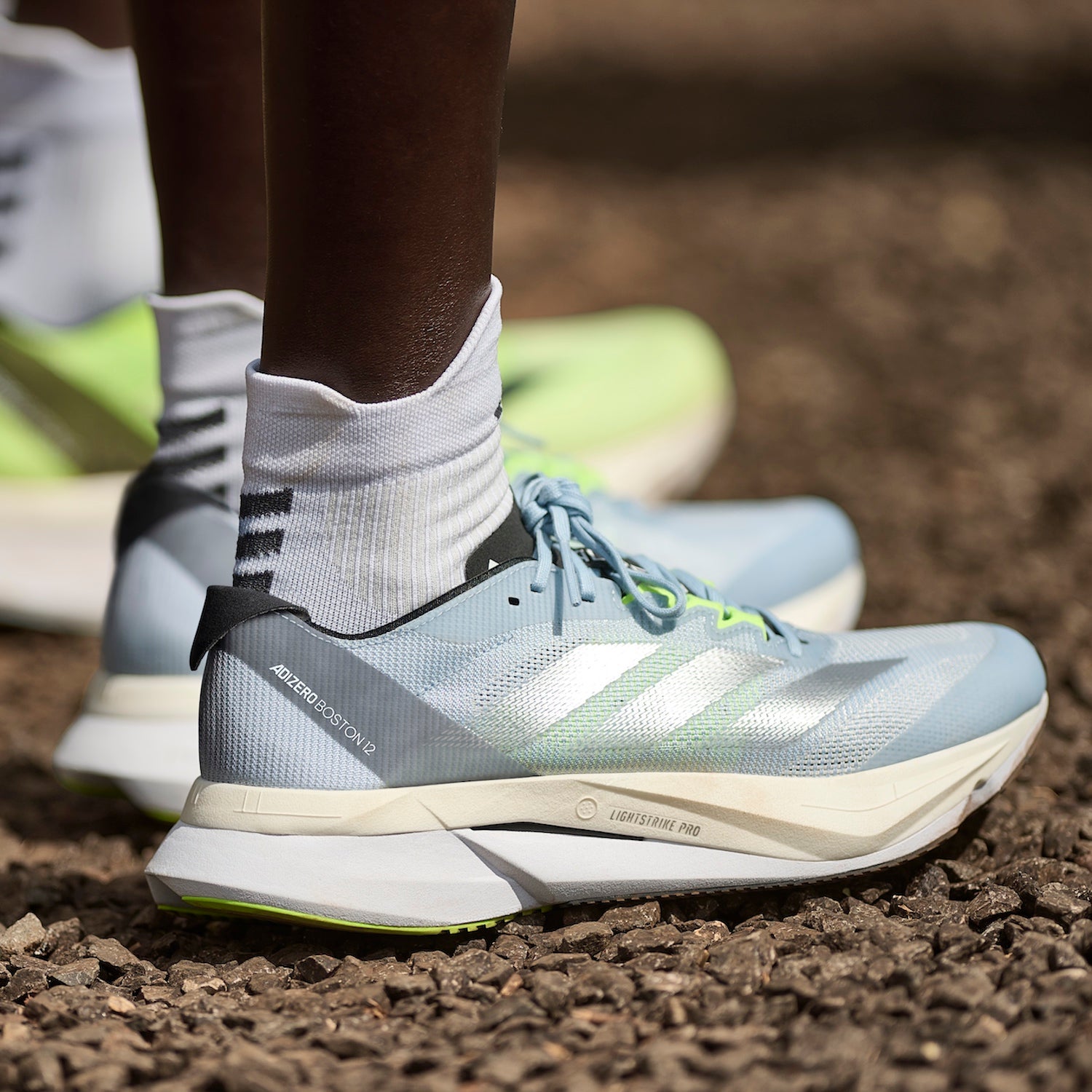MSRP: $160
Weight: 8.0 ounces. (women’s size 8), 9.2 ounces (men’s size 9)
Heel-Toe Offset: 37mm in the heel, 30.5mm in the forefoot
Stack Height: 6.5mm
For years, the Adidas Boston was a performance training shoe designed to get you through both the high-mileage weeks and the faster workouts necessary for running a strong marathon like, say, Boston.
But while shoe materials, components, and design paradigms improved with the running shoe industry’s focus on racing shoes, the Boston ambled along with minor midsole foam updates and the addition of a truncated version of Adidas’ original Energy Rods system. Now, as the focus has switched back to training shoes, there’s been a trickling down of top-tier technology that has started to enhance models in the performance training shoe category like the Boston.
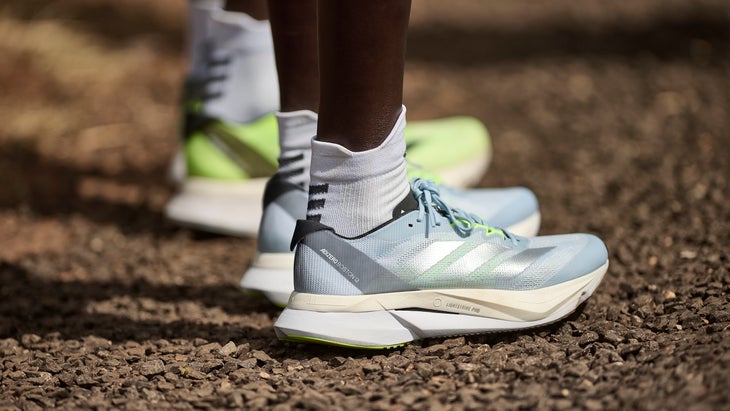
One of the newest models in this revamped category, the new Adizero Boston 12 features Adidas’ new Energy Rods 2.0 propulsion system embedded in its midsole, an update that’s also found in its top-of-the-line Adizero Adios Pro 3 racing shoes. (Other shoes in the same semi-super training shoe realm include Saucony’s Endorphin Speed 3, Puma’s Deviate Nitro 2, the recently released ASICS Magic Speed 3, and the forthcoming Saucony Kinvara Pro.)
RELATED: The Best Road Running Shoes of 2023
The new edition of the Boston trainer has an updated foam midsole package that consists of a layer of Adidas’ high-rebound, TPE-based Lightstrike Pro foam just below the foot, and a bottom layer of its new semi-soft, shock-absorbent, EVA-blend Lightstrike 2.0. Between the two layers is the updated Energy Rods 2.0 system—five long, thin glass-fiber-infused tubes that are connected under the heel and align with the metatarsal bones of a runner’s foot. It’s an update to the half-length rods of the previous edition, and designed to carry the downward energy from a runner’s foot strike into the forefoot to set up the toe-off phase of the stride.
The stack height and heel-toe offset have both been reduced slightly from the previous edition, for enhanced agility and better proprioceptive ground feel. (For comparison, the Adidas Adizero Adios Pro 3 has a similar 39.5mm/33.0mm stack height and the same 6.5mm heel-toe offset.)
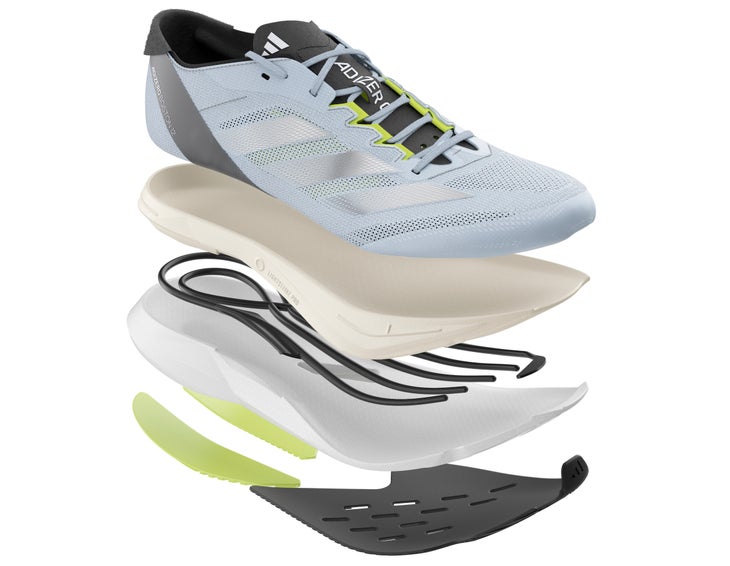
The Adizero Boston 12 fits pretty true to size lengthwise, with a medium interior in the heel and midfoot, but a wide, very spacious toebox. The shape is ideal for runners with medium or wide feet, but those with narrow feet might consider trying this model a half-size smaller than their typical size. It has sparse interior trimmings and a modest step-in feel, kind of like a race car with a nice set of throw pillows.
The new light, airy engineered mesh upper has minimal interior support overlays and a thin, free-floating tongue made from 50 percent recycled materials. They provide a reliable, locked-down fit, but not much in the way of lateral structure. Overall, the shoe is about one-third of an ounce lighter than its predecessor, but it barely seems noticeable.
I received a pair of the new Bostons in the first week of June and have been wear-testing it as one of my primary road running shoes since then. To date, I’ve taken it on two moderately long runs (up to 12 miles), a tempo run, and a few fartlek-style up-tempo workouts, as well as a handful of short, easy-paced recovery runs. What I found in those 50 or so miles at various paces was a lively and versatile shoe capable of a wide range of training efforts.
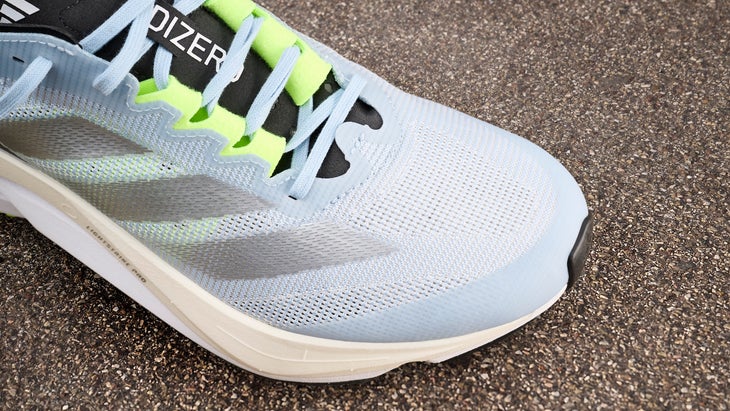
At most paces, the ride feels soft, smooth, light, and stable with a hint of additional springiness as my stride rolled toward to my forefoot to complete the gait cycle. The shoe is not at all bouncy like some energetic models with carbon-fiber or nylon plates embedded in their high-rebound midsoles, but instead it produces a consistent rolling sensation that feels like the shoe is momentarily adhered to the ground. Although the midsole seemed to flex consistently as one uniform unit, the more absorbent Lightstrike 2.0 foam is thicker under the heel, while the juicier Lightstrike Pro is thicker under the forefoot, combining to create a dual sensation of cushioning and quick-rolling propulsion.
As much as I enjoyed the Adizero Boston 12 on the tempo runs I did, I actually liked it just as much on the slightly slower-paced longer runs where it cushioned and supported my stride smoothly, even as I became fatigued and my gait started to suffer. Although it lacks the bouncy feel and sharper race-day edge of some other performance trainers, it makes up for it with a buttery smooth vibe, long-haul comfort and a wider range of training service.
